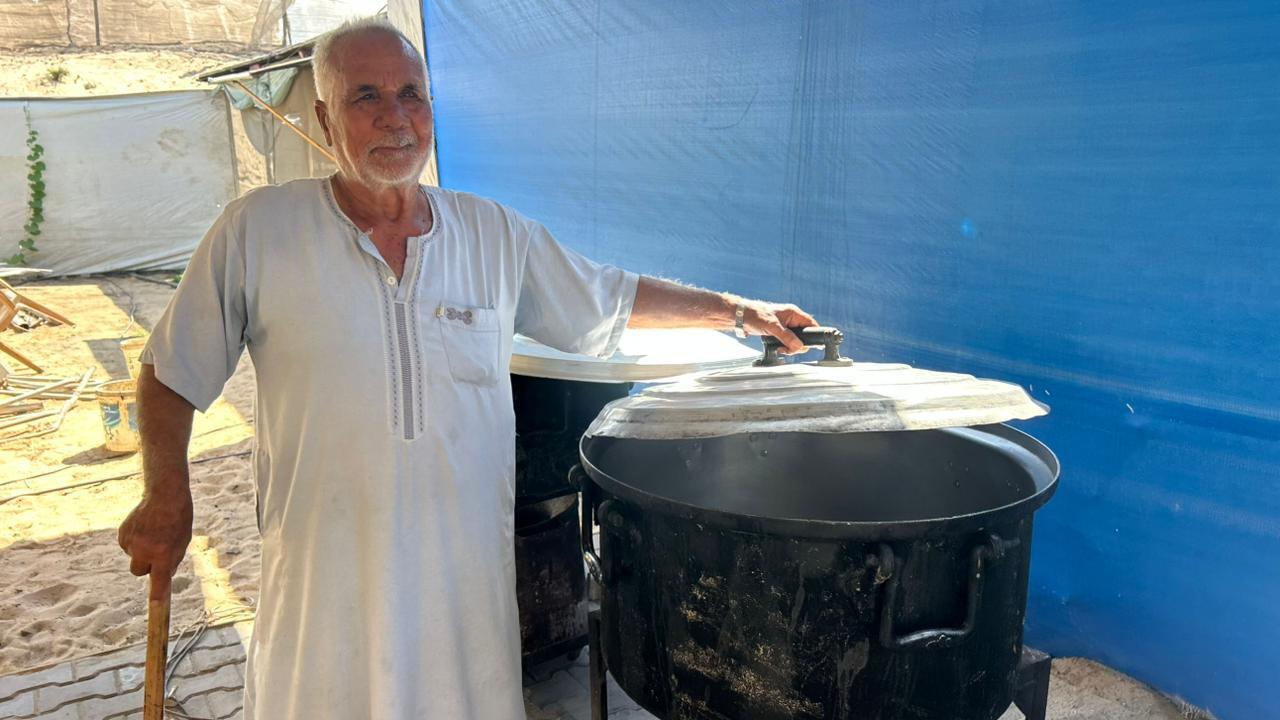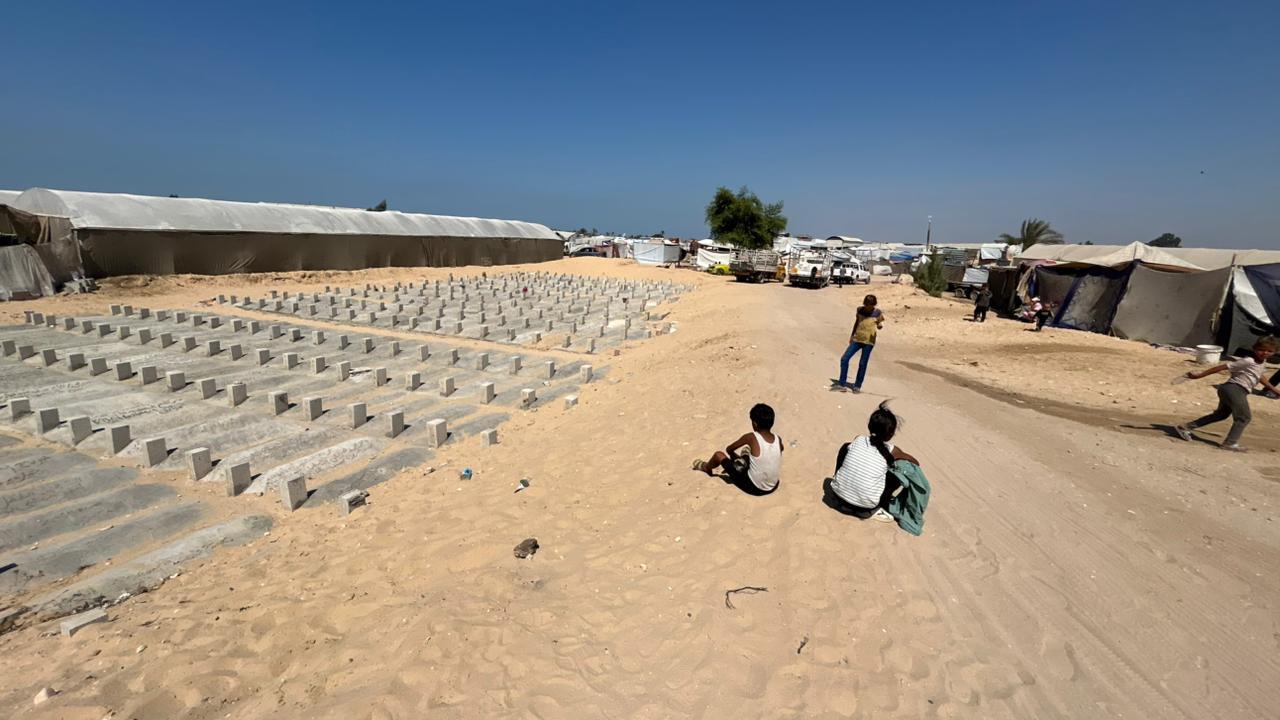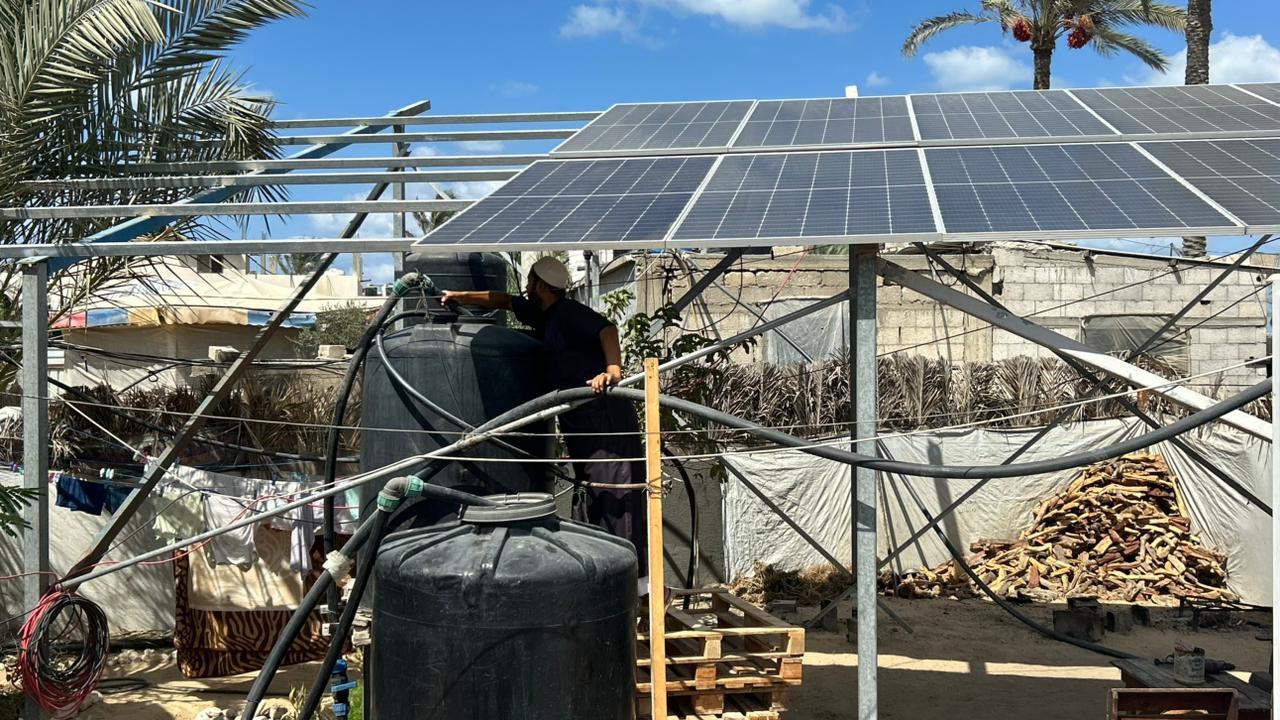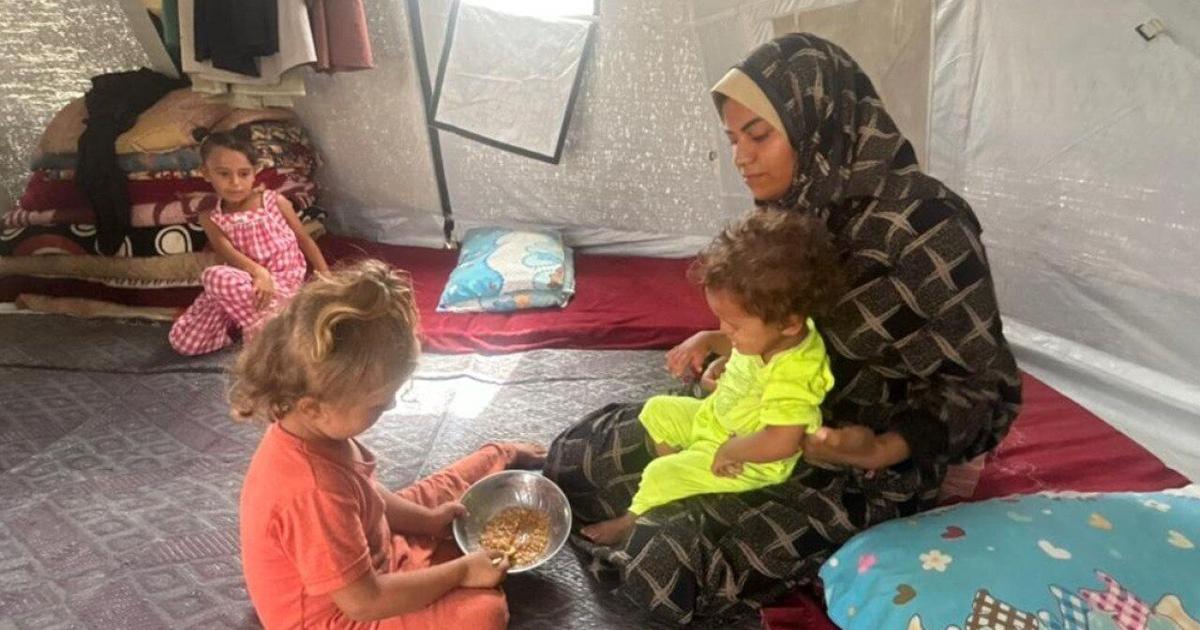![]()
The farmers sheltering displaced Palestinians on their land
As soon as Omran Khamees Al-Astal appears from a distance, leaning on his old wooden cane, men rise to greet him and kiss his head in a sign of respect.
The 79-year-old farmer and grandfather sits on a plastic chair outside his home in southern Gaza’s Al-Mawasi. Through bouts of back pain, he listens attentively to the problems and requests of the displaced Palestinians he has been hosting on his land since December 2023. Some had returned to their homes between February and mid-May but were forced to come back.
Now, some request more drinking water, better quality food, and a healthcare emergency tent. Umm Abdul Rahman, a mother of seven, emerges from a worn-out tent, asking Al-Astal to help repair it before the onset of winter. “Consider it done,” he tells her. “We have already registered your name with a nearby aid organization.”
Despite the recent ceasefire deal brokered by the White House after two years of U.S.-sponsored bombardment by the Israeli government, more than 100 families remain on his land. They have no home to which they may return.
“As Palestinians, we must find solutions to support each other, and to provide whatever we can to others,” Al-Astal tells Next City. “We have a saying that the full bowl pours into the empty one,” he says. “With my land, water and ability to provide aid, I have a full bowl.”

Southern and central Gaza witnessed myriad grassroots initiatives to host and assist the displaced, with many residents improvising scrappy solutions to stretch their resources and help meet the immense need for shelter, food, medicine and transportation.
Most of those on Al-Astal’s eight dunams — about 2 acres — of land were displaced from Rafah and Khan Younis in the south, or Beit Hanoun and Beit Lahia in the north. Some families live in tightly packed tents, while others surround the edge of the property in all directions. He knows each of them by name.
Al-Astal himself has 10 surviving children and about 50 surviving grandchildren. Four sons and five grandchildren were killed in Israel’s wars on Gaza: Three sons, two grandchildren and a daughter-in-law were killed when their home was bombed in 2014, and another son and three more grandchildren were killed two months ago. The homes of his 10 surviving children, as well as his own house in central Khan Yunis, were destroyed in the current war.
It’s a microcosm of the pain and disruption that Palestinian families across the Gaza Strip are experiencing. According to the most recent report by the U.N. humanitarian aid agency OCHA, the Israeli military killed at least 67,173 Palestinians and injured 169,780 more over the past two years. Human rights experts say these numbers are likely significant undercounts.
The report notes that the U.N. and its partners had faced physical and bureaucratic impediments preventing them from providing lifesaving assistance at scale in the Gaza Strip, with Israeli authorities’ unpredictable rejection of entry of pre-cleared cargo types and denials or impediments to humanitarian movements hindering operations.
Following the ceasefire deal, U.N. relief chief Tom Fletcher outlined a 60-day plan to deliver hundreds of thousands of tons of vital food, medicine and fuel. “Famine must be reverted in areas where it has taken hold and prevented in others,” Fletcher said. “So we will be distributing in-kind rations. We’ll be supporting bakeries, community kitchens.”
Until the reality changes on the ground, Al-Astal continues what he started.
He dedicates part of the daily operating hours of his water well to provide water for cleaning and washing, even at the expense of some of his sons’ greenhouses. Two months into the displacement crisis, he started providing barrels of fresh water and filling them daily in coordination with relief agencies so people would not need to travel far to get it.
He then allocated land for a communal kitchen where cooked meals are prepared, often using his own produce or with assistance from other local organizations.
Right now, it’s date harvest season. Al-Astal supervises workers as they divide up the fruit for each family to take its share.
“More than eight dunams of land could have earned me tens of thousands of dollars per agricultural season…but this money is worthless compared to helping the displaced and providing them with shelter and dignity,” says Al-Astal. “What I offer today is what will benefit me in the grave.”
Thinking about the afterlife is what drove him to allocate one dunam of land for a cemetery after Gaza’s main cemeteries fell under Israeli control.
“We couldn’t find a place to bury our dead,” Al-Astal recalls. “I could not stand idle so I asked my sons, who work in construction, to buy the necessary materials like bricks and cement and to build dozens at no cost. It was a solution for families desperate to bury their dead with dignity.”
Two months ago, the new cemetery reached capacity.

Elsewhere in Al-Mawasi, Noura Abu Dan found refuge in a displacement camp set up on Sheikh Mohammed Ahmed’s land. The 26-year-old widow and her four young children rely mainly on the water, food and other services provided there.
Israeli forces destroyed their home, north of Khan Yunis, two months into its attack on Gaza. The family has been displaced ever since. Abu Dan’s husband was killed last year — shortly before their youngest child’s birth — by an Israeli air strike while trying to move from an UNRWA school shelter in Khan Yunis.
After moving between several UNRWA shelters and other camps, she and her children settled in 35-year-old Sheikh Ahmed’s camp, where special attention was given to family privacy and care for widows, orphans and vulnerable groups.
“Inside the camp, I don’t worry about the fate of my orphans,” Abu Dan says. “The most important thing is the sense of security and privacy. I also feel that basic needs are met most days, with barrels of drinking water inside the camp, and other water for household use. Food is also distributed from the communal kitchen regularly.”
A camp supervisor records Abu Dan’s needs to prepare for winter: clothes, blankets, a tarp to prevent rainwater from leaking into her tent.
Sheikh Ahmed oversees 85 families in the camp on his land, which exceeds six dunams — about 1.5 acres. Some is allocated for shelter, support services and a donor-funded communal kitchen to provide cooked meals.
The 35-year-old spends most of his day moving between tents in his camp and neighboring camps to meet daily needs, especially water. He operates 15 wells, powered by his solar energy system, to supply water to thousands of displaced people.
“The water crisis for household use is enormous,” says Sheikh Ahmed. “At first, I tried to supply families through pipes, but demand was far greater than supply. So I turned to powering wells with electricity to serve more people.”

He explains how he expanded his solar energy system by adding new panels and more powerful batteries. “This resolved the household water issue for thousands of displaced people in our area.”
He and his father, who has a trading business, were determined not to wait for help from external organizations. “We put in our own money and worked with Gaza’s philanthropists who didn’t hesitate to provide all the needed financial support,” he says.
Sheikh Ahmed himself has also been displaced, along with his wife and three children, since their home in Khan Yunis was destroyed by Israeli air strikes months ago.
“We must never surrender to reality,” he says. “The desire to volunteer and serve the community will reap results, because no one will hesitate to help you once you take the first step towards doing good.”
Like Al-Astal, Sheikh Ahmed could have made a fortune if he had cultivated his land and sold water and electricity. He believes he got the better end of the deal, though.
“Farming and trade can come back anytime, but helping people at times of crisis can only happen now,” he says. “I prefer trading with Allah for the afterlife, not for this world. This is an opportunity that may never come again.”
This story was published in collaboration with Egab, an initiative empowering local journalists across the Middle East and Africa to publish stories in regional and international media outlets.
This story was produced by Next City, a nonprofit newsroom covering solutions for equitable cities, and reviewed and distributed by Stacker.


